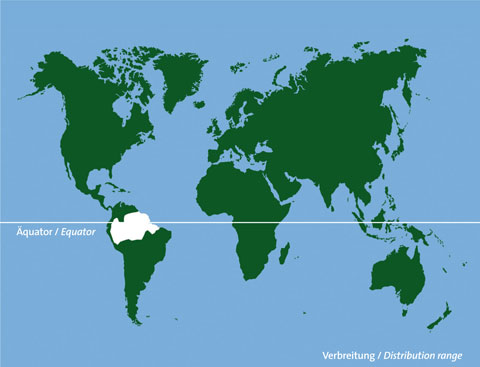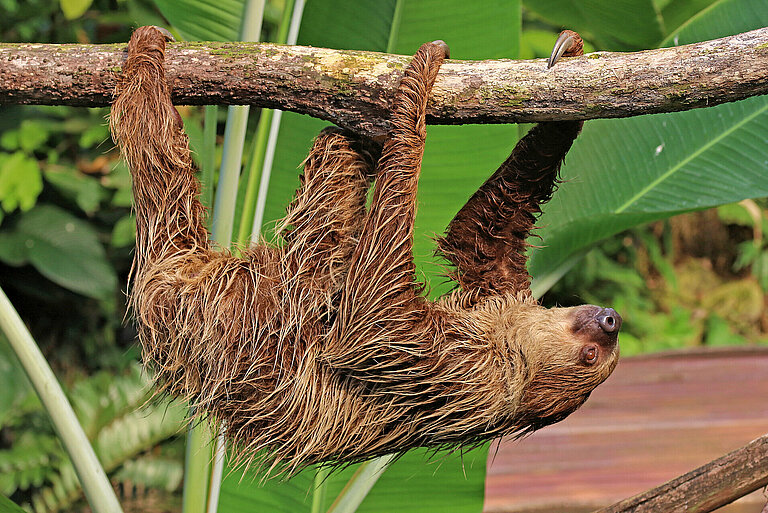Did you know?
Two-toed sloths mainly live in the treetops, where the camouflage effect of their colour makes them almost invisible. Their grey-brown fur is often covered with greenish-blue algae, which can only be found in the hair of these animals. The two have a symbiotic relationship, so to speak. Sloths only rarely come down to ground level, for example to change trees or to defecate, which they only do once a week.
The typical slow-motion movements of this animal should not be interpreted as slothfulness, but serve on the one hand for camouflage purposes and on the other reflect the sloth’s adaptation to a diet which is low in nutritional value.
Characteristics
| Classification | Order: hairy xenarthrans (Pilosa), family: twotoed sloths; related to anteaters |
|---|---|
| Diet | Leaves, young shoots, flowers, fruits, buds, various insects, eggs and rodents |
| Habitat | Tropical rainforests, forest edges, river banks, mostly in the canopy |
| Reproduction | Gestation time: approx. 6–8 months, one young; sexual maturity at 2–3 years; maximum age: over 36 years |
Status according to Red List
More information you will get on the web page of the IUCN Red List.







